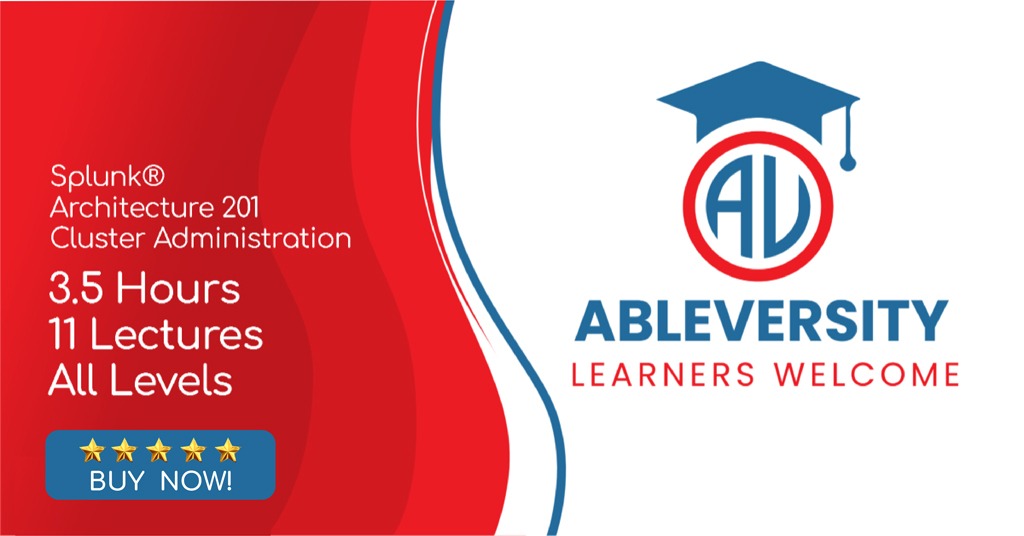
Splunk Architecture 101 | Splunk Architecture Certification Exam Prep
Are you prepping for your Splunk Architecture certification courses?
This course was made as a high level overview to prime you for the Splunk courses at a fraction of the price of the actual courses.
This course includes:
- 2.5 hours on-demand video
- Certificate of completion

Course content
1 section • 12 lectures • 2h 52m total length

Prerequisites
It is highly recommended you complete the following courses from Ableversity on Udemy prior to taking this course:
- User, Power User, Administrator
Description
This course provides a comprehensive introduction to the role of an Architect in Splunk deployments. It covers the essential skills required to plan and manage Splunk installations effectively.
In Module 1, students will learn about the role of an Architect and the key responsibilities involved in managing a Splunk deployment. This module provides an overview of the knowledge and skills required to build a successful Splunk environment.
Module 2 focuses on the planning process required for deploying Splunk. Students will learn about the best practices involved in preparing for a deployment and how to create a deployment plan that meets the organization’s specific requirements.
Module 3 covers all things related to indexers in Splunk. Students will learn about indexers, and how to configure them for optimal performance. Covers how indexers should be set up and configured with data ingestion in mind
In Module 4, students will learn how to plan their deployment based on server roles. This module will teach students about the different server roles in Splunk and how to configure them effectively for maximum performance. A demonstration of configuring server roles is included in this module.
Module 5 introduces students to clustering concepts in Splunk. This module covers the basics of clustering and how it can be used to improve the scalability and availability of Splunk deployments.
Module 6 focuses on forwarder management and data ingestion in Splunk. Students will learn how to manage forwarders and configure them to collect data effectively. Demonstration on how to make custom changes and integrations with Splunk to fit your use case.
Finally, in Module 7, students will learn about the monitoring console in Splunk. This module covers the key features of the monitoring console and how to use it to monitor the health and performance of a Splunk deployment.
By the end of this course, students will have gained a thorough understanding of the key concepts involved in planning, configuring, and managing Splunk deployments effectively. They will be equipped with the knowledge and skills required to build and maintain Splunk environments that meet the specific needs of their organization.
Click the image below to enroll in this course






Wanna see more Ableversity content?
Subscribe to our YouTube channel and Follow Us
Want more information on any of the above? Contact us or join us on slack.
